Welcome to Chill Crisp, my internet corner of thoughts about food and recipes with context. Mostly Chinese food I’ve been eating my whole life and new flavors inspired by travel, research and a splash of creativity.
Mapo Tofu, loud and proud
After savoring a handful plates of steaming hot Mapo Tofu during my recent trip home to Sichuan, it dawned on me why this dish is so iconic. It was everywhere, from unassuming small eateries to restaurants on the higher ends. It boasts the Málà flavor (spicy and tingly) and deploys some of the essential Sichuan ingredients: doubanjiang, Sichuan pepper and chili. A great plate of Mapo Tofu is encapsulated in an eight-word phrase: 麻、辣、鲜、香、烫 、酥 ( translates as tingling, spicy, umami, fragrant and hot, crispy). It demands bold pungency without much compromise. My recipe (scroll to the bottom) is an adapted version based on my research from the Sichuan cookbook “大众川菜” (Da Zhong Chuan Cai) and some other books. Plus, of course, internet. To watch the video, see here.
Choosing the Right Tofu
Soft tofu lends the perfect texture to this dish. It has a firmness between silken and firm tofu (these two work, too). In Sichuan it’s called 石膏豆腐 or 嫩豆腐 due to its coagulation process (traditionally with gypsum). Chef Wang Gang has a video of making tofu in 4 ways. In Germany, the tofu selection can be confusing, given the mix of Chinese, Korean, and Japanese options all labeled as firm tofu (Naturtofu) with varying consistencies. I've found success with two types of soft firm tofu here: Extra Weich and Tofu Blando .
Blanching tofu in salt water imparts seasoning and retains tofu's shape. According to food writer Shi Guanghua (author of essay collection “我的川菜生活”), use the blanched tofu asap or keep it in hot water to maintain its tenderness and prevent hardening. This step also eliminates any smell from boxed tofu's storage liquid. If you want to spare dishwashing, you could also soak in boiling water from the kettle.
Sichuan Pepper
Always opt for freshly ground Sichuan pepper, treating it like your everyday black pepper. I sourced premium peppers from the renowned Sichuan region of Han Yuan – bright red husks with minimal dark seeds, boasting a distinctive citrusy fragrance. When purchasing Sichuan pepper, examine the production date and seek out vibrant colors.
The bean paste
Pixian Doubanjiang (spicy fermented chili bean paste,豆瓣酱) is considered one of the defining ingredients to Sichuan cuisine, and thus the essence to this dish. Get the brand Juan Cheng 鹃城牌 that often comes in a chubby plastic red jar. I also own a jar from Lee Kum Kee, which can be a milder substitute. But the original is undoubtedly recommended. I’d consider douchi (fermented black soy bean, 豆豉) secondary.
Historical accounts from the book "中国川菜史" (History of Sichuan Cuisine) reveal that earlier versions of Mapo Tofu solely featured douchi instead of doubanjiang. The latter rose to prominence in the 1950s, while douchi became more optional. I also went extra mile and mixed in some 5-year aged doubanjiang to yield a more complex flavor. In short, use the chili bean paste from Pixian.
Additional notes
green scallion used to substitute garlic sprouts (or green garlic) in the original recipe, use them if you can find
beef and pork mince are both commonly used in Sichuan, beef is leaner thus can result a crispier texture, but pork works as fine.
starch water is added in 2-3 batches, because tofu release water while cooking and potentially thin out the sauce. Ideally we want a thin starchy sauce, without being too watery.
this dish is best enjoyed hot, use a deep plate and let the tofu submerged in the sauce.
More about the book, the dish and its home version
This recipe is part of my journey through "大众川菜" (Da Zhong Chuan Cai) a cookbook dating back to the 1970s and believed to be one of the earliest Sichuan cookbooks for homecooks. It offers not only familiar recipes but also novel, or fading ones, offering insights into the cuisine's evolution. Though titled "Mala Tofu" this recipe shares the same preparation as Mapo Tofu. Originating in the late 19th century, Mapo Tofu has gained popularity within Sichuan and beyond, becoming one of the most influential Sichuan dishes and inspiring variations such as Japanese Mabo Dofu.
My grandmother had her own version, called "烂肉豆腐" (scrambled tofu with minced pork), where she finely crumbled the tofu and used milder spices. She replaced Doubanjiang with her homemade fermented chili sauce and omitted chili flakes at all, resulting in a flavorful yet gentler option, perfect for young palates like 8-year-old me. Again, Mapo Tofu seems to be a restaurant dish but was enjoyed by many Sichuan families in different ways.
The Recipe
block of soft tofu (approximately 450g, drained)
150g ground pork
2 tbsp vegetable oil
2 tbsp Sichuan chili bean paste (Doubanjiang)
10 fermented black beans (Dou chi)
1 tsp minced ginger
1 clove minced garlic
1 tsp chili flakes
2 tsp light soy sauce
1 tsp dark soy sauce
10-15 whole Sichuan peppercorns
150 ml vegetable or chicken stock
2 scallions, green parts chopped (about 5cm long)
Starch water (mix 1 tsp starch with 1 tbsp water)
Toast Sichuan peppercorns in a dry pan over medium-low heat for about 2 minutes, until fragrant. Grind them into a coarse powder using a mortar and pestle or a spice grinder. Combine fermented black beans and Sichuan chili bean paste.
Cut tofu into 2cm cubes. Simmer water in a pot and add about 1/2 tsp of salt. Gently place tofu cubes in the simmering water for approximately 2 minutes. Remove and drain the tofu.
In a wok, heat vegetable oil over medium-high heat. Add ground pork and stir-fry until water evaporates and pork turns crispy. Introduce minced ginger, garlic, bean paste mixture, and chili flakes. Stir until the oil turns vibrant red. Incorporate soy sauce blend.
Deglaze with stock and allow a light simmer. Carefully add tofu cubes to the wok, coating them with the sauce. Simmer for 3-5 minutes to meld flavors. Gradually add starch water in 2-3 batches, stirring in between to achieve a glossy, slightly thick sauce. Add chopped scallion greens. Serve hot, garnished with sieved Sichuan pepper.




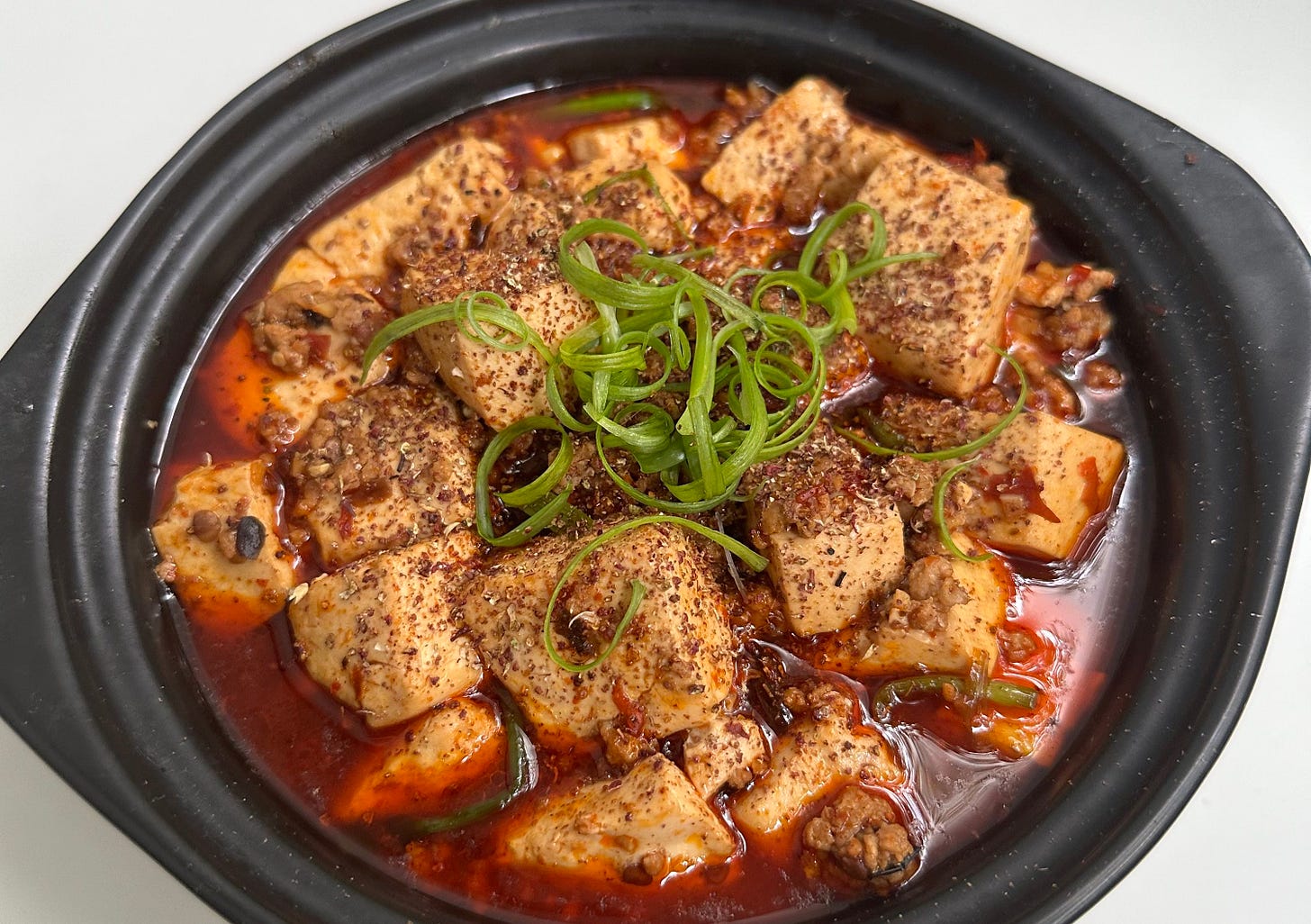
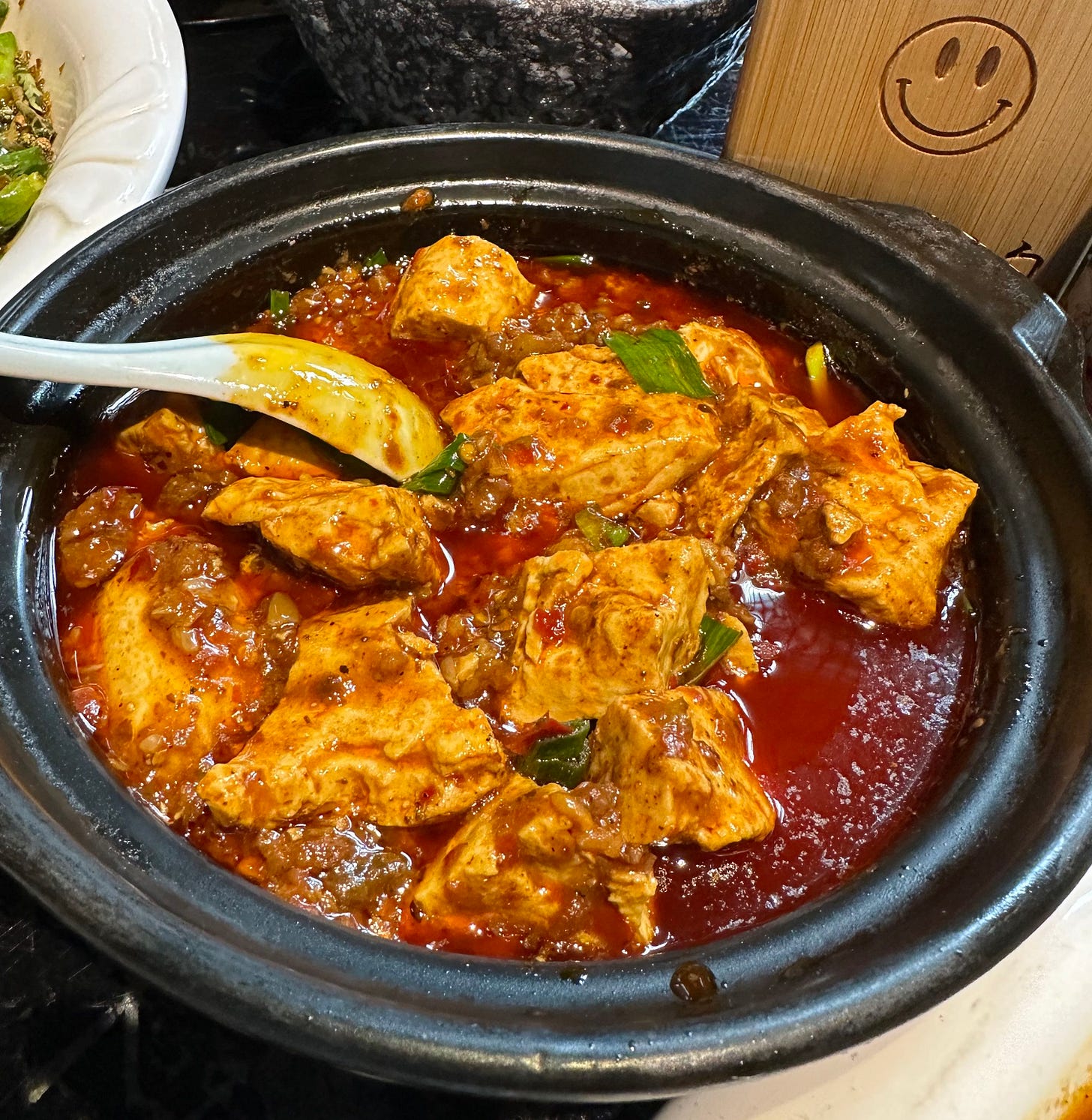
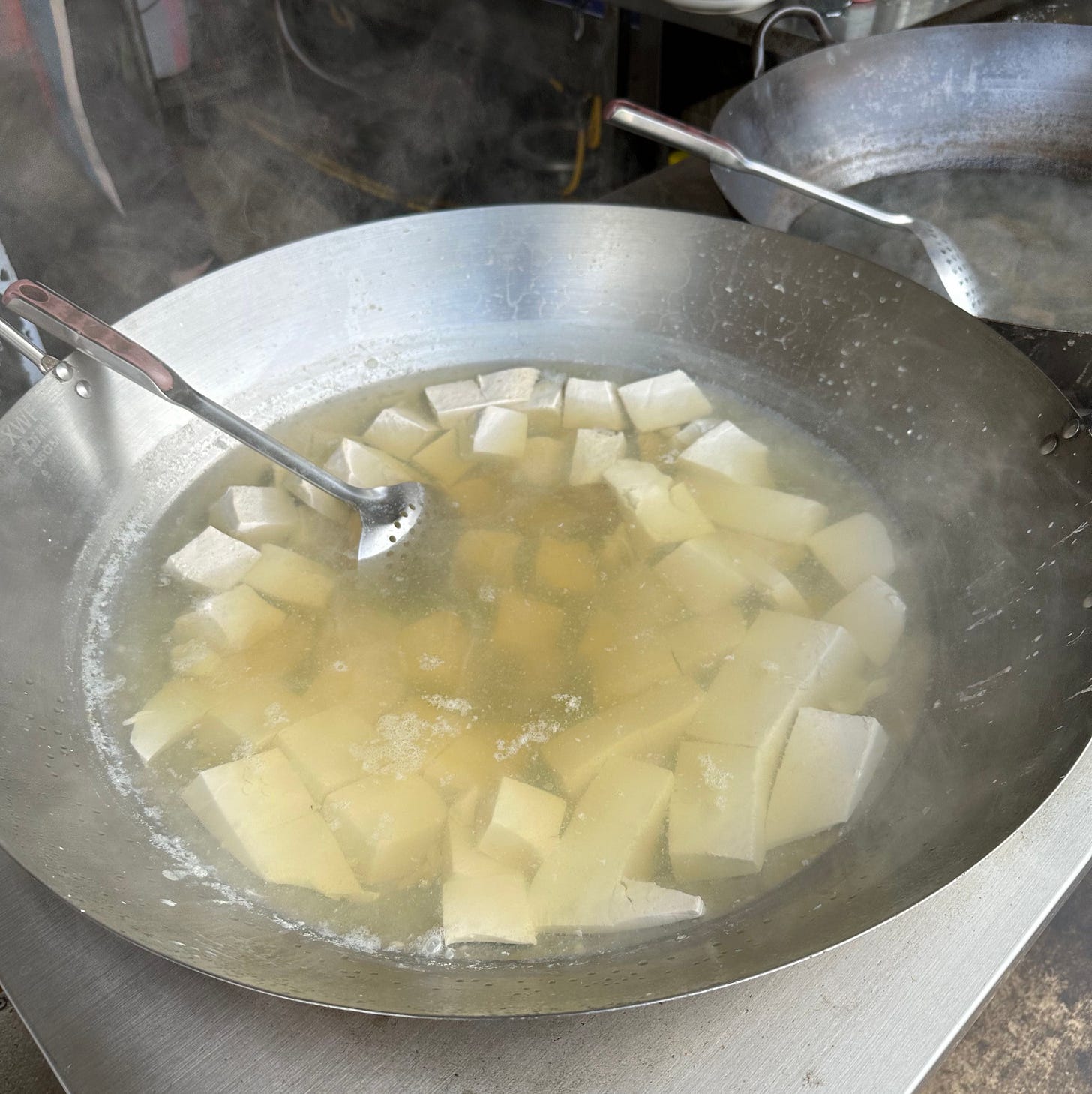
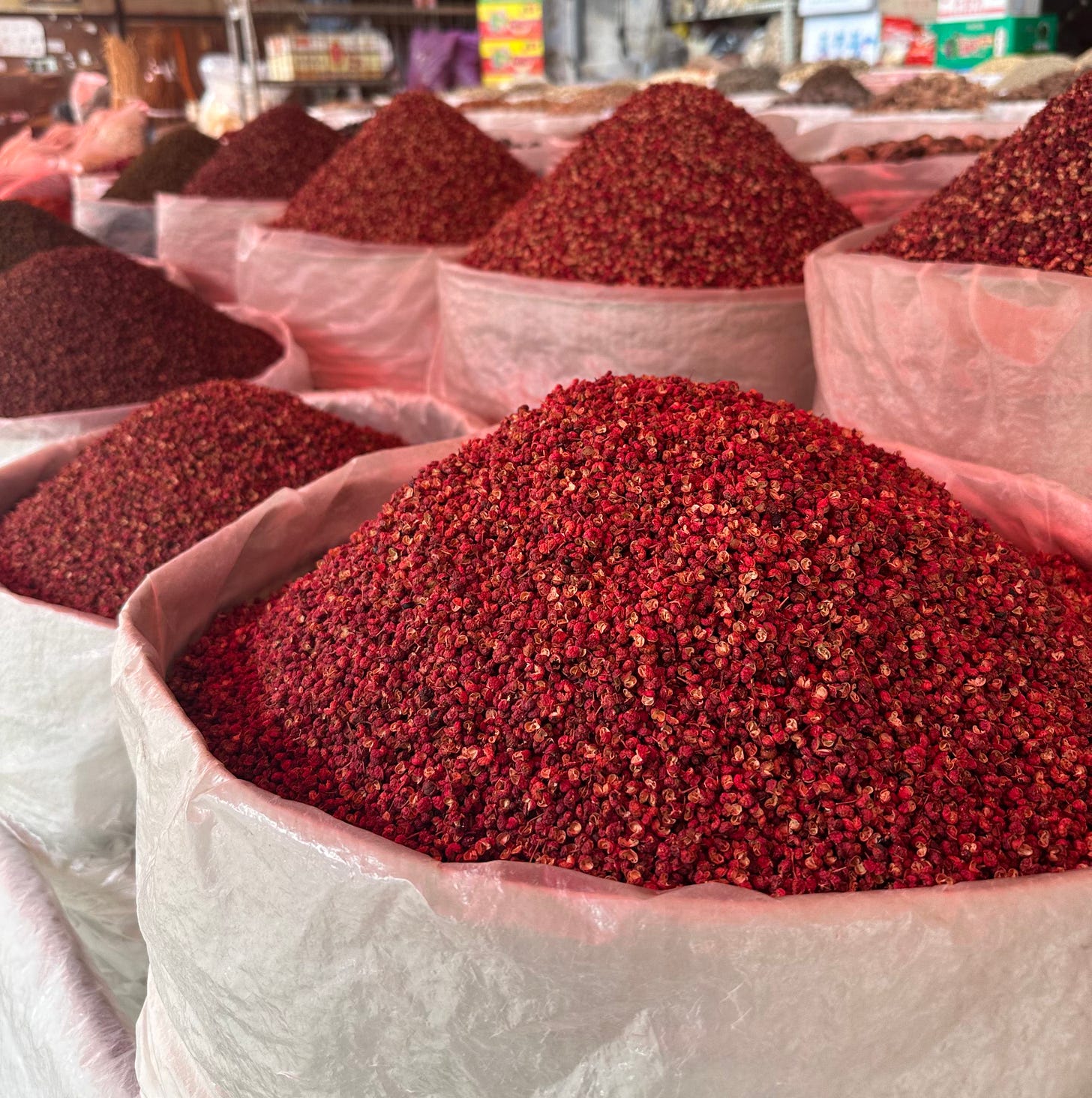
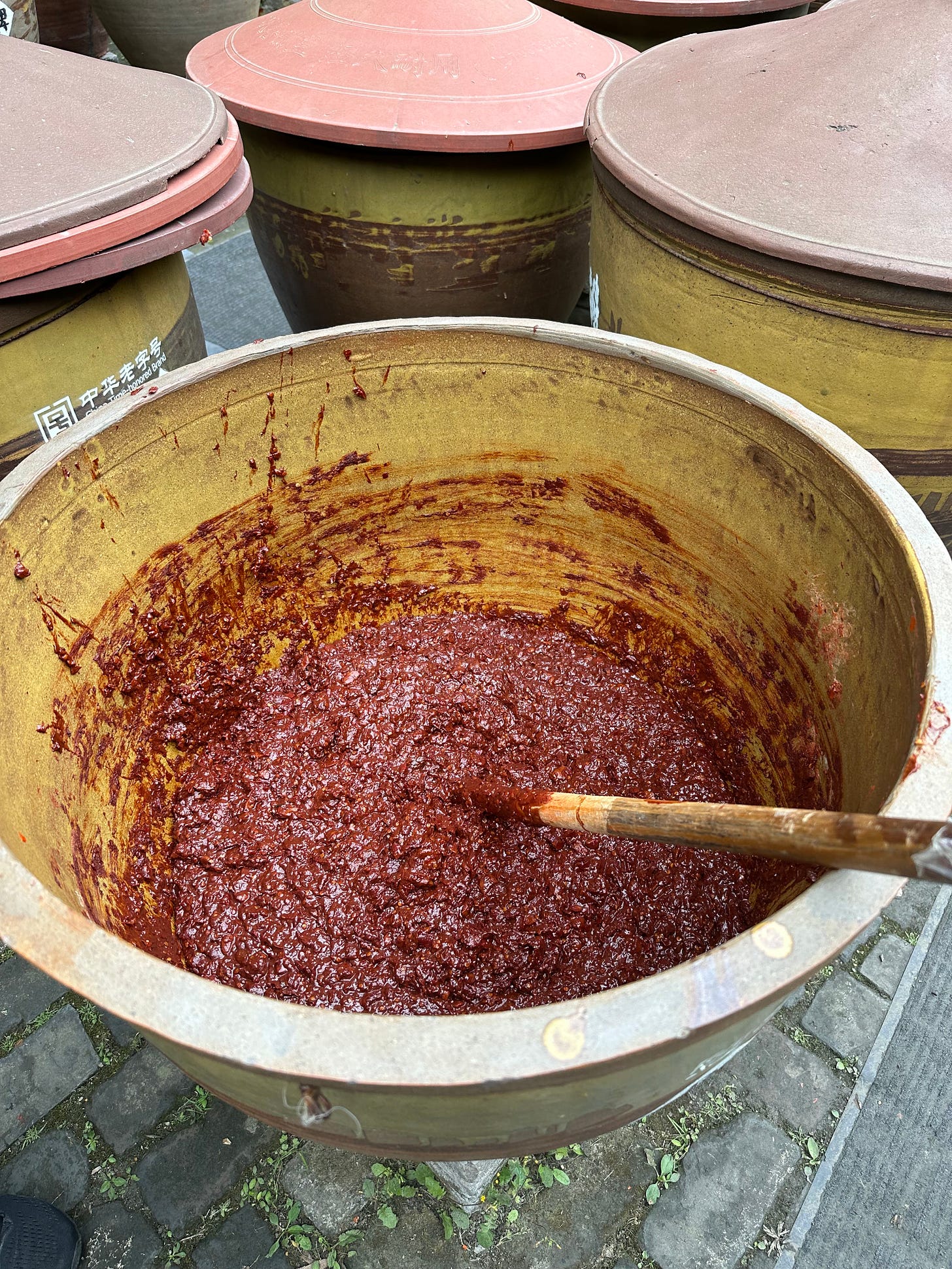
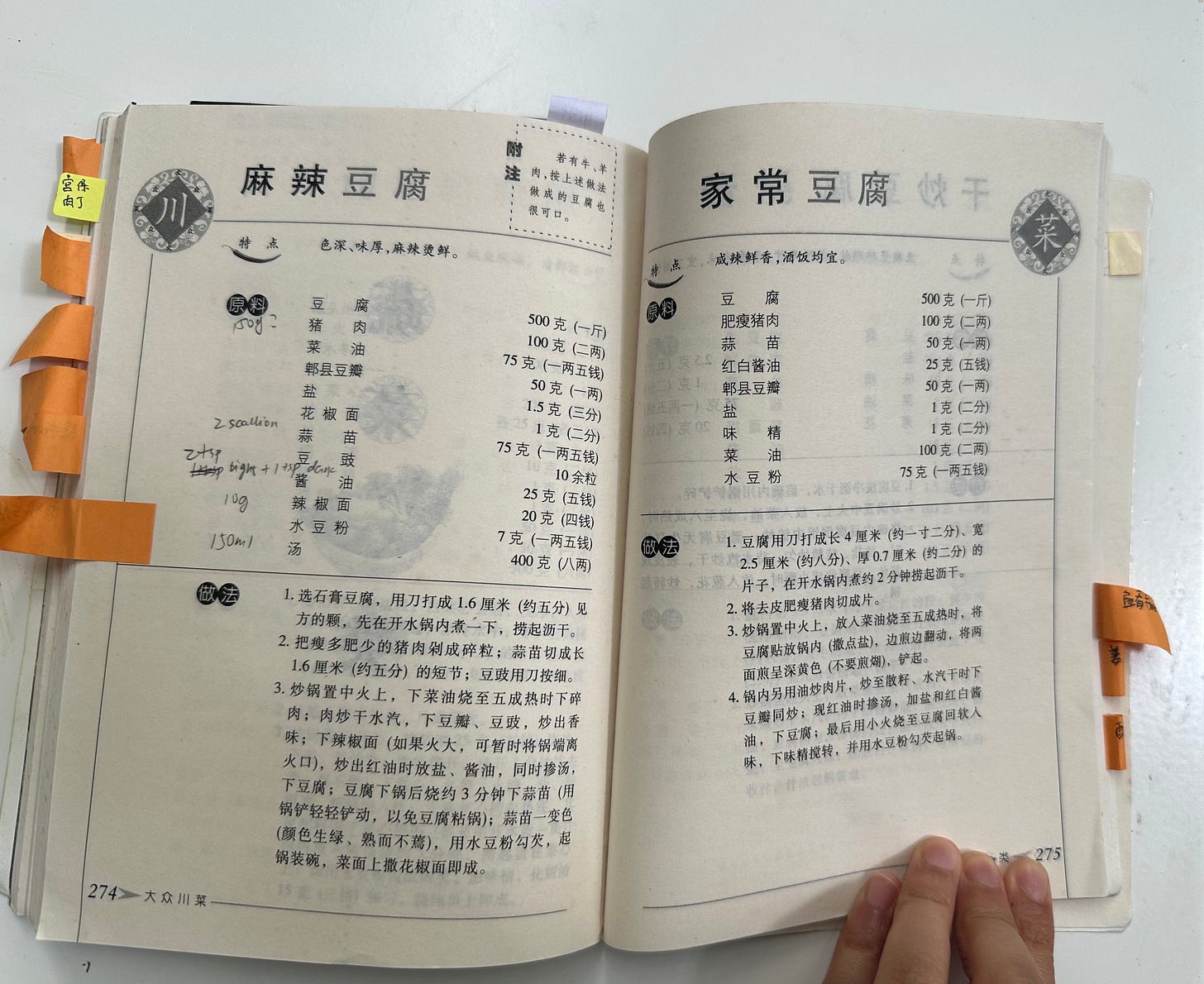
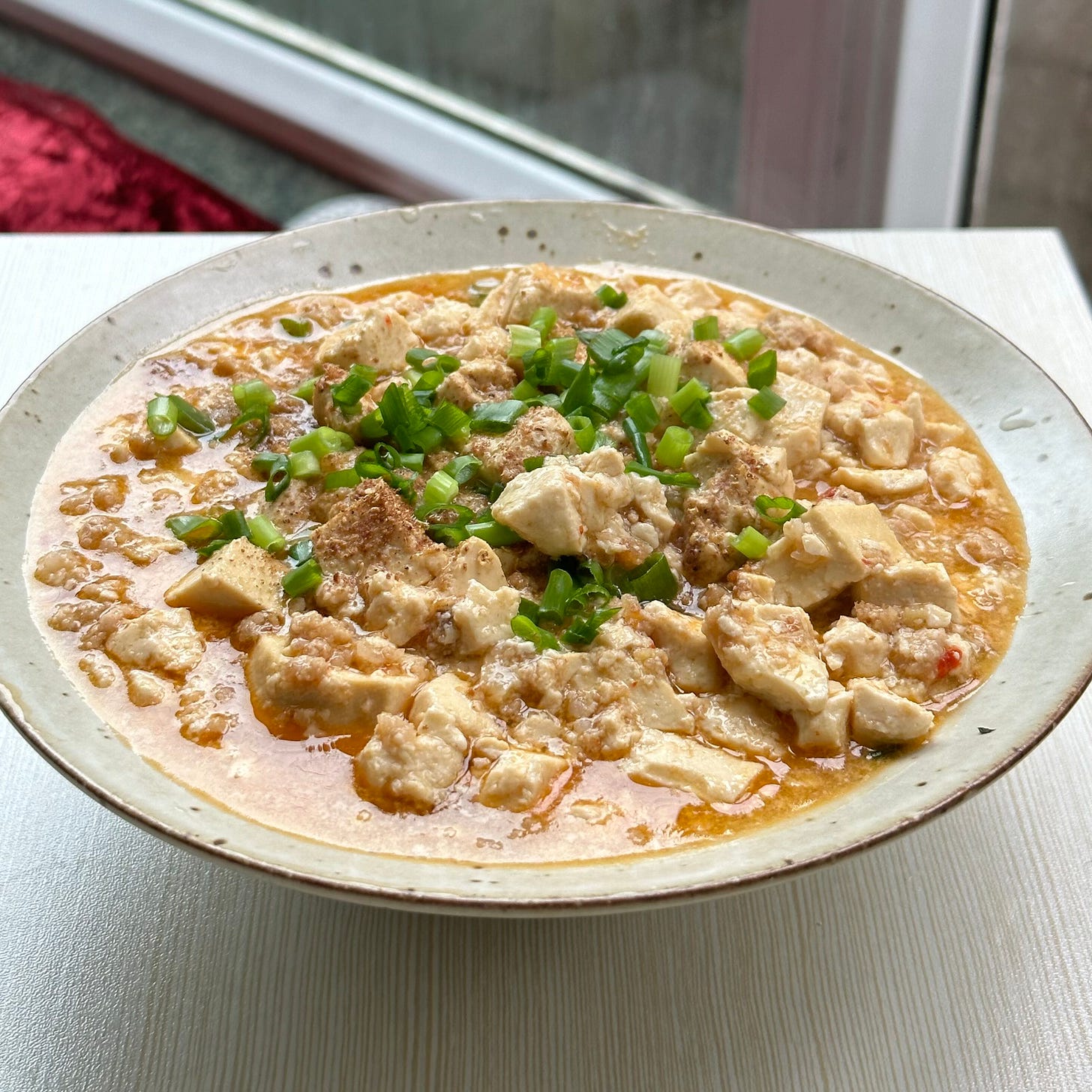
Might I ask what the buddhist varieties tend to use for the pork? Presumably a soy texture of some sort, but I'd welcome any insight. I've wanted to try this vegetarian, but I've been unclear on what substitutions would produce good results.